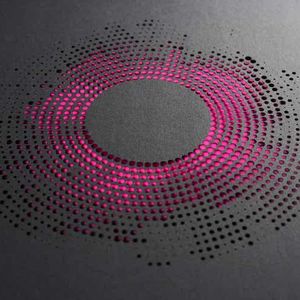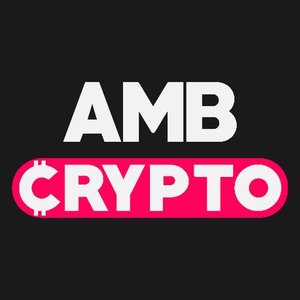Polkadot Poised For Significant Growth: Why Shorting DOT To Buy SOL Is A Bad Idea
7 min read
Summary I believe Polkadot will outperform in 2025 due to upcoming catalysts, a strong developer ecosystem, and significant growth potential compared to Solana. DOT’s recent inflation rate reduction and decreased unstaking period are bullish moves, attracting new investors without long lock-in periods. Cardano’s partnership with Polkadot and the future Polkadot 2.0 and JAM updates are major catalysts for DOT’s growth and adoption. While the easy money in Solana has already been made, DOT’s robust developer community and potential catalysts present a compelling investment opportunity. I believe that Polkadot is likely to be one of the best performing Crypto currencies over the next 6 months. This is not an easy call to make given the extremes to which DOT has underperformed the crypto market (and to a larger degree Solana) in 2024. The below graph highlights how Solana’s +1000% rise to the 3rd largest crypto project dwarfs Polkadot’s 48% growth. Seeking Alpha But due to a series of upcoming catalysts, a robust developer ecosystem, and a massive ceiling for growth compared to that of Solana, I believe 2025 will be Polkadot’s time to shine. This article is meant to directly address PropNotes article, “ Polkadot Is Falling Behind, Short DOT And Buy Solana Instead ”, and while I highly respect their research as some of the best due diligence on Seeking Alpha, I respectfully disagree with their call of using Polkadot ( DOT-USD ) as a short hedge. Polkadot isn’t building a meme coin generator, NFT marketplace, a DEX, or anything that is currently in demand. They are building a global super computer the likes of which has never been seen, and I believe that when they succeed, demand for the coin will follow. The Competition It’s worth noting that these two cryptocurrencies operate with radically different purposes and are not in direct competition. I believe it’s highly likely that they will both see success in their corresponding missions. Solana competes directly with Ethereum ( ETH-USD ). It’s faster and cheaper than ETH due to its pioneering technology of “Proof of History” and strict hardware requirements, which has led to SOL’s rise in popularity as it processes over 15,000 transactions per second compared to Ethereum’s 15TPS. The main argument against Solana is that it is far more centralized than Ethereum. Polkadot, on the other hand, seeks to operate as a communication layer between currencies. Where Ethereum and Solana are competing layer 1 currencies, both with wide arrays of Layer 2 projects utilizing their blockchains, DOT seeks to be a layer 0 allowing for Solana and Ethereum (or any other crypto project) to operate over top of it and communicate seamlessly with each other. While most crypto projects are competitive by nature, the purpose of DOT is inherently cooperative. It operates under the assumption that one cryptocurrency will never take over the entire market, as different projects will be better suited for different purposes. That said, Polkadot has its own competition in the interoperability space as new projects like Aptos ( APT-USD ), Sui ( SUI-USD ), and Sei ( SEI-USD ) come to market. For this reason, it is important that DOT continues to innovate and improve with its strong developer base. A Community Focused on Development over Marketing The comparison below highlights how robust the Polkadot developer ecosystem is. Despite being the 18th largest Crypto by market capitalization, it has the 2nd most full-time developers behind Ethereum and frankly blows most projects out of the water. For comparison, Ripple (XRP-USD), the 6th largest crypto by market cap, has just 33 full-time developers. Chart is my own, data from developerreport.com Even with DOT’s price struggling in 2024 while Solana hype exploded, it still has more full-time developers and only slightly lagged in monthly active developers. On the marketing front, Polkadot’s X account posts a little over half as often as Solana’s with content focused around attracting developers rather than attracting investors. One of Polkadot’s latest tweets advertised a whopping $89million programming prize (the largest in history) for implementing their JAM protocol. X Catalyst 1: Inflation and Staking Overhaul One of the biggest bear cases against Polkadot is its high rate of inflation. Back in September, Dot’s inflation rate was 10% compared to Solana’s sub 5%. Holders can stake their DOT and receive high staking rewards to help offset this high inflation, but this requires locking in for at least 21 days. This turned away anyone without a rock solid belief in Polkadot as it forced the buyer to forego flexibility by locking away their DOT or else face massive dilution. However, this month the project opted to lower inflation to 8% and to continue to decrease it year by year. In addition, over the next few months the project will be decreasing the unstaking time from 21 days to 2 days. I believe this is an incredibly bullish move for DOT, as new investors can take a shot at the project and stake for rewards without committing to 21 days. While it’s still quite high for an inflation rate, it’s a step in the right direction. Polkadot Wiki Catalyst 2: Cardano Collaboration, More to Follow Cardano ( ADA-USD ) and Polkadot recently announced their cooperation and intent to form a “bridge” and connect Cardano to the Polkadot project. This will mark the largest projects to partner with Polkadot and is a massive vote of confidence for the technology of DOT. As their entire purpose is the connection of communities, this cooperation announcement can’t be overstated. I believe this will cause others to follow suit, especially with the exciting technology coming to the Polkadot chain in the future. The most likely candidate for this is Near ( NEAR-USD ), currently the 25th largest crypto project by market cap. Near already uses Substrate, a blockchain framework created by Polkadot, making a collaboration extremely easy between the two projects. Founder of Polkadot Gavin Wood had this to say : Substrate-based chains are easy to integrate into Polkadot or Kusama to become a parachain or parathread. Essentially, Substrate is the SDK with which you can build parachains and Polkadot is the means of securing the chains and allowing them to communicate with each other. I should point out that it’s not at all an issue for projects that don’t use Substrate to collaborate with Polkadot. It only makes it slightly easier for them to do so. Catalyst 3: Polkadot 2.0, and Eventually JAM Reddit DOT has a steady pipeline of improvements, as highlighted in their roadmap above. Polkadot 2.0 provides updates to hopefully bring back the excitement that the project had in 2021, and the last and biggest piece of the puzzle is Elastic Scalability, due to drop in Q1 of 2025 . Elastic Scalability goes beyond the scope of this article. Oversimplified, it will allow projects operating on DOT to rent the exact amount of processing that they need at any time allowing them to grow without issue. This answers a key problem in the DOT ecosystem and will hopefully attract projects to work with DOT. Further in the future, JAM is a really exciting technological advancement on the DOT timeline. Polkadot founder Gavin Wood had this to say about it : Basically it’s a big shared computer that always works exactly how you expect it to… You can upload your programs to run and your programs can be sort of services that solve particular problems and because it’s a shared computer those Services can cooperate and coordinate with each other Rather than just being able to host communication between currencies, JAM will enable Polkadot to host full applications as well. I believe this has the potential to be one of the biggest and most influential innovations in crypto. While JAM isn’t expected until near the end of 2025, I believe that the future prospect will attract projects to work with DOT in the short term. Catalyst 4: Mythos, A Polkadot Parachain, Is Picking Up Steam X.com This week it was announced that a FIFA mobile game is coming to Mythic Games with a full web3 economy. Mythic Games operates Mythos, which is ran on a Polkadot parachain, so the traffic from the game will flow directly through Polkadot architecture. For reference of how big it could scale, FIFA’s last mobile game has more than 500 million downloads . Mythos has been doing incredibly well in the NFT space. As the below chart indicates, They’re punching way above their weight class, keeping up with Solana and Polygon. x.com Polkadot is likely to see success by proxy as projects utilizing its architecture succeed. While part of the bear thesis is that adoption has been slow coming to Polkadot, success stories like Mythos should not only spur on the price of DOT, but also attract more projects to the architecture. Conclusion While I’m a big fan of the Solana project, I believe that the easy money has already been made there. When it comes to DOT, the robust developer ecosystem and the mountain of potential positive catalysts on the horizon is an opportunity that shouldn’t be passed up, and should definitely not be shorted. I believe DOT has a good chance of returning to its $55 all time high in 2025 and substantially outperforming Solana in that time.

Source: Seeking Alpha



